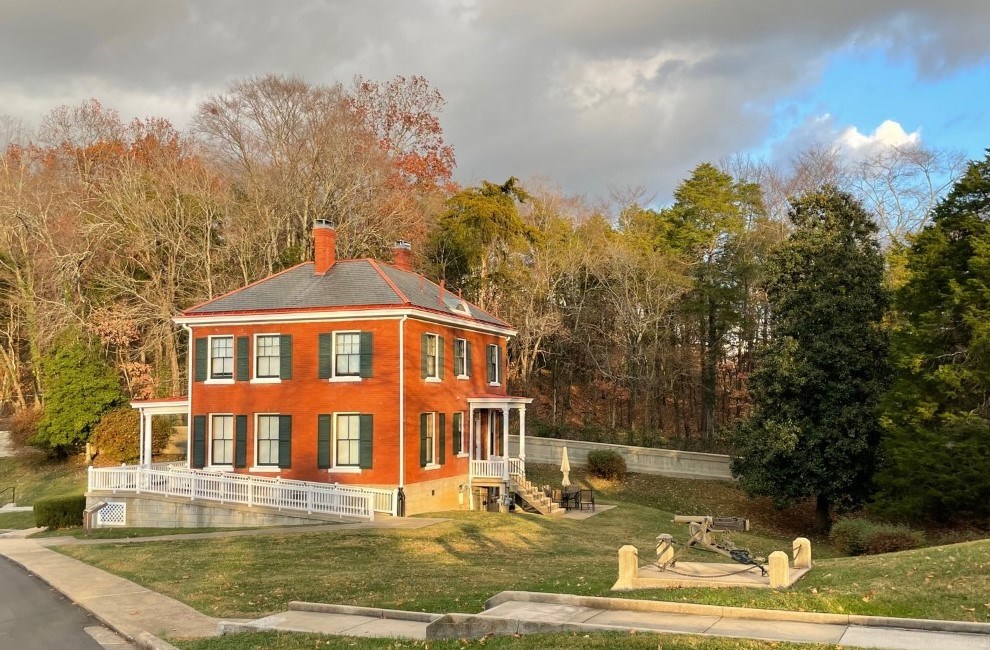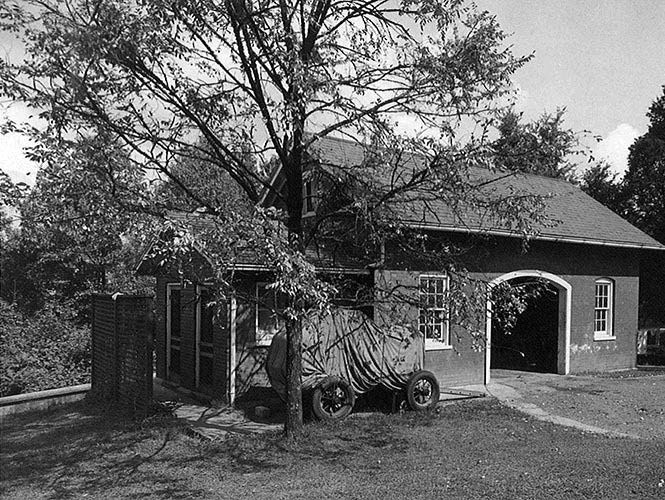Last updated: June 9, 2025
Article
A Century of Service, Renewed: Historic Roof Replacements at Andrew Johnson National Cemetery
In early 2025, two historic buildings at the Andrew Johnson National Cemetery had their roofs replaced for the first time in 117 years.
When the cemetery caretaker’s lodge and stable buildings were constructed between 1907 and 1908, both were given slate roofs. By 2025, those same roofs have finally reached the end of their lifespans.
“Not many people can point to a building and say that roof is 117 years old,” says Andrew Johnson National Historic Site and National Cemetery Superintendent Aaron Shandor. “Only recently have both begun to experience some degree of failure. That’s a very good track record.”
NPS
Lodge and Stable, Past to Present
While the lodge and stable have experienced some changes, the structures are still in use and remain important to the operation and appearance of the national cemetery today.
The cemetery began as the Johnson family burial ground, located at an elevated site on the outskirts of Greenville, Tennessee. When the property was transferred to the War Department in 1906, the federal government developed the landscape following national cemetery design guidelines. The cemetery lodge and stable were features of the General Development Plan of 1908. The cemetery was transferred to the National Park Service in 1942.

NPS
The stable building was constructed to shelter a single horse and serve as a tool house for laborers at the cemetery. Growing need for a maintenance facility and public restrooms led to the renovation of the stable into a utility building (with public facilities) in 1936. While a separate maintenance shed was built in 1958, the original stable continues to be a center of maintenance operations, used as office space for cemetery maintenance staff in the park.

NPS
New Roofs for Historic Buildings
As part of a Cyclic Maintenance Program, funding was available to replace both roofs.
“The intent behind this project was to preserve the original appearance of both structures,” says Facilities Supervisor Josh Hines. “Thus, a key component for this project was to replace in kind.”
NPS standards governing replacement and rehabilitation work on historic structures require that any replacement/rehabilitation use the same components as are found in the original structure. In this case, modern slate shingles were used to replace the original 117-year-old slate shingles.The newly installed roofs for both cemetery buildings replicate their original appearance precisely.
“We have kept some intact representative samples of the original slate shingles from both buildings,” says Shandor, who eyes the new roofs appreciatively. “Barring any unforeseen disaster, we are expecting that both roofs should hold up for another 100-plus years.”





